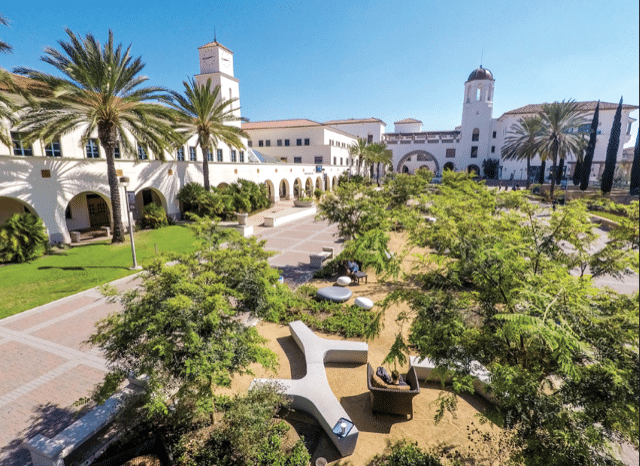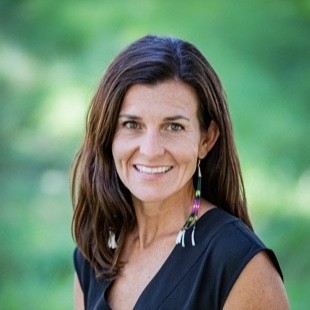Sometime during the COVID winter of AY 20–21, I started to imagine our faculty as a forest.
Maybe it was Zoom fatigue. Or maybe it was my own research: my book “Why We Left” (Minnesota, 2013) examined the enclosure and destruction of English forests as a precipitant of the mass displacement of English to North America. Forests held it all together for rural English people—protecting waterways, providing habitat for game animals and bees, producing nuts during food-scarce winters, and anchoring the shared imagination that held communities together. When their forests were threatened with enclosure and privatization, people rioted. When forests were destroyed, as hundreds of thousands of acres were, communities dissolved.
What holds faculty communities together? Deeply shared professional values—a “deep conviction of the worth and dignity of the advancement of knowledge” and regard for “common membership in the community of scholars”—can motivate academic discovery, inspired teaching, extraordinary service, and, well, riots once in a while. Could a values-anchored commitment to care (and the promise of a steady paycheck) bring us through a global pandemic?
The Multifaceted Work of Faculty
During our long COVID winter, I saw San Diego State University faculty drawing from deeply held collective values to hold our campus together by extending care and generosity to each other and to our 38,000 students. As did faculty around the world, our professors served as classroom first responders and Zoom lifelines, even as they shouldered the burdens the pandemic brought to us all—and disproportionately to our colleagues of color.
Returning to campus after those brutal lockdown months, I could see the toll this effort took not only on individuals but on the collective health, communication, collegiality, energy, and continuity of our faculty.
This is what “common membership in the community of scholars” means after all: faculty work is a collective, interconnected experience. Faculty are rooted in and evolve in the context of campuses, disciplines, and communities that have their own distinctive histories, climates, vulnerabilities, and stressors.
The multifaceted work of faculty—as teachers, researchers, artists, and stewards of the university’s academic mission—is held together by a million largely invisible strands of interrelatedness and interaction, just as forests are—as our colleagues in biology have shown—held together by massive underground fungi.
The benefits a well-rooted, diverse, and healthy faculty can generate are, like those of an old-growth forest, simultaneously essential, invisible, and precious: the generative cultivation of knowledge for the common good, the inculcation of disciplines of critical inquiry and communication essential to the health of human societies, and, perhaps most importantly, the opportunity for young people to participate in such a hopeful collective experiment during their formative years.
COVID pushed me to (forgive the cliche) see the forest for the trees. It led me to conceive my post-pandemic work as an Associate Vice President of Faculty Advancement and Student Success, not primarily as developing individual faculty members (a verb I’ve never liked) but rather supporting the community of scholars that hold my university together.
Fostering a Culture of Faculty Support
Faculty support is more than training chairs to carry out routine managerial processes, dispensing helpful tips on managing professional pitfalls, or staging tenure and promotion workshops. Before, during, and after the pandemic, our robustly diverse assistant professoriate was, in fact, achieving tenure and promotion at very high rates. But they were stressed—by the fraying of their own physical or mental health, the impossible math of stretching a public university salary to cover the costs of living in California, by new expectations from students for teaching multi-modality and ubiquitous online availability, by the many righteous but loosely coordinated “asks” proliferating from university offices, and even by the abrasive conduct of a few colleagues.
Fostering a culture of faculty support means recognizing faculty as the critical and distinctive resource of any university—a resource that deserves ongoing care and repair. We often talk of the liabilities of “deferred maintenance” when it comes to facilities; what are the “deferred maintenance” liabilities we face post-COVID in our human infrastructure and our collegial relationships? What are the most important investments a university can make in the future of its faculty, collectively conceived? How do universities support the well-being of this hopeful and sometimes difficult profession and its hopeful and sometimes difficult constituents?
For my part, I still offer workshops, but I start everyone with a catechism of questions prompted by my SDSU colleague Lacie Barber, a professor of industrial and organizational psychology, whose research on telestress and its related work demands has won national notice:
- Are you checking email after 5 PM or on weekends? Do you have email notifications set on your phone, and if so, why?
- Are you holding at least 20% of your calendar for your own research, scholarship, or creative activity?
- Are you limiting your 1:1s to 20 minutes or convening advisees in groups?
- Do you have a regularly convening accountability/writing group?
Taking Action for Faculty Advancement
I now urge junior and senior faculty alike to dismantle the air of doom and mystery that still hangs over our tenure and promotion processes, an unhelpful residue of the days when hazing (like dating your graduate students) was seemingly an accepted element of faculty culture.
I now use my resources to fund a Women Faculty of Color support group led by women faculty of color who are credentialed in psychology and the counseling fields, with participants reporting positive outcomes in terms of their well-being and persistence.
In addition, I have started consistently elevating housing as a critical “faculty advancement” priority in my conversations—which is critical because faculty work best when they feel securely rooted.
It can be tough putting down roots in San Diego these days, but they do it.
Like the ribbons of centuries-old oak trees and fire-scarred sycamores in the canyons just north of campus, faculty hold on through tough circumstances.
They are tough, sometimes gnarly. They are key to the whole ecology.
Deep in their treebones, most of the time, they know what they are doing.
Author Bio:
Joanna Brooks is an award-winning author and editor of 10 books on race, religion, gender, social movements, and American culture. She has appeared in global media outlets, including the BBC, NPR, the Daily Show, CNN, MSNBC, and The Washington Post.
Joanna is a graduate of the CSU Executive Leadership program and a founder of SDSU’s Digital Humanities Center and Shared Governance Leadership Institute. She holds a PhD in English from the University of California, Los Angeles.
Any opinions, findings, conclusions, or recommendations expressed in this material are those of the authors and do not necessarily reflect the view of Interfolio.

